Introduction
New to road biking? This guide tells you all about what a road bike is, and the different types of road bikes so you can find the type of road bike that is best for you. So, what is a road bike? A road bike is a bike that is specifically designed to be efficient while riding paved surfaces and is not suitable for riding off road. From fitness riding to racing and everything in-between, there is a road bike for everyone.
At ERIK'S, we stock many different types of road bikes. With so many options, it's not surprising that shopping for a road bike can be an overwhelming experience. When it's your first road bike, it can be a challenge to know which road bike style is best for you. This guide breaks down each type of road bike to help you find the best option for you and your riding goals.
The differences between road bike types and models (and all bikes, really) stem from a trend toward specialization in the bike industry. In other words, there's a specific bike for every purpose. The question you need to answer is “What is My Riding Style?” After that, it's a matter of knowing which road bike best suits those needs.
Keep reading this guide to learn everything you need to know to help you choose a road bike perfect for you!
Types Of Road Bikes
Within the road bike category, the choices in styles of bikes, materials, and components are seemingly endless. The central thing to think about is what's important to you as a rider.
One way to classify road bikes is by their handlebars: flat bar and drop bar. Although most of this article will be focusing on traditional drop bar road bikes, flat bar road bikes are a great option that should be considered when looking at a road bike.
Endurance Road Bikes
If your preference is to rack up miles, an Endurance Road Bike is a great option. This style balances between comfort and performance. The rider's position on an endurance road bike is slightly more than on a performance road bike and the handling is designed to be more stable. These bikes usually have design features to help reduce road vibration to make long days in the saddle a breeze.
Performance Road Bikes
If you aim to ride as fast and hard as possible, or even race, then you should look at Performance Road Bikes. Performance road bikes put the rider's body in a lower and more aerodynamic position. The handling of the bike is also going to be quicker.
Gravel Road Bikes
If you are participating in the many gravel events in your area or you're wanting to load all your gear for a bikepacking adventure, consider a Gravel Road Bike. Not only are these perfect for loaded trips, but they also offer the option of getting off the paved road, so your ride doesn't haven't to stop just because the smooth road does. They're even a popular option for commuting. You can learn more about these bikes on our Gravel Bike Buying Guide.
Single Speed Road Bikes
If you're looking for a simple means of urban transport, a Single Speed Road Bike gets rid of the gears to reduce maintenance and cost. If you're really brave (or the ultra-purist), many of these can be run as a fixed-gear bike.
Aero Road Bikes
If you're looking for even more speed - especially in the wind - an Aero, or Aerodynamic, Road Bike is for you. Designed to go ridiculously fast by reducing a rider's frontal profile as much as possible with a short headtube and aerodynamically shaped tubes which gives riders much less resistance to overcome.
Flatbar Road Bikes
Commonly called fitness and active bikes, these are the most popular of any category of bikes - and for good reason. First, they are comfortable, easy to ride and efficient making them great for fitness rides. These bikes put the rider in a neutral body position, to prevent being stretched like a racer, but also not too upright or relaxed, adding to the reasons these bikes are perfect for may looking to bike more. This positioning results in a bike that is easy to steer and control while maintaining a comfortable body position. Second, these bikes are fast and efficient. They feature light materials, like aluminum and carbon fiber, with components that are capable of hard and fast while rides while the rider works up a sweat and racks up miles.
These bikes are typically all-purpose in design so that they can go everywhere from roads to bike paths to gravel, they can do long fitness rides, charity rides or rides with the kids in tow. Fitness bikes are fun and easy to ride, and riders can just hop on the bike and go as they please. Their ease of use, comfort, and versatility are why so many people have found fitness bikes to be the right type of bike for them.
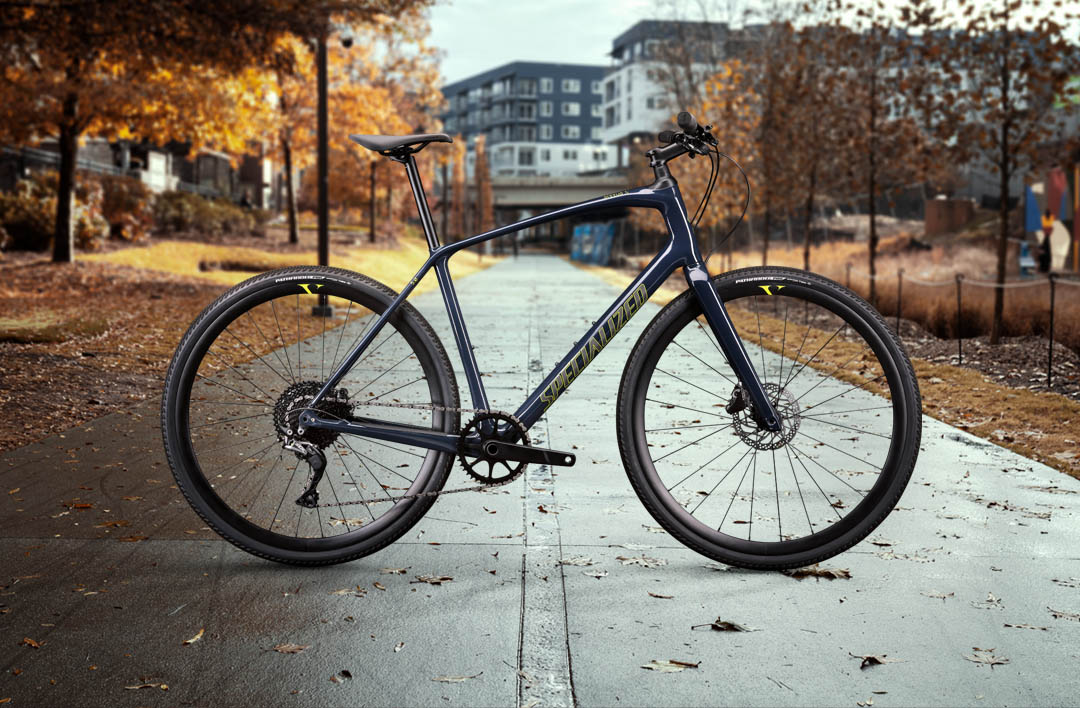
Dropbar Road Bikes
If flat bar road bikes are so great, then why would I want a drop bar road bike? Drop bar road bikes are faster, and they can be more comfortable on the longer rides. They also offer more hand positions and better aerodynamics. They're engineered to be fast, efficient, and more aggressive, whether you're in a sprint or on a long-distance ride. There are multiple styles of road bikes that use drop bars, Endurance, Performance and Gravel bikes all typically have drop bars, so how do you determine which style you need?
To figure out which style of dropbar road bike is best for you, it helps to answer two questions.
1) Will you be riding on smooth, rough, or unpaved roads?
Bikes engineered for smooth pavement will typically have slick tires but won't be equipped to deal with mud jamming up the brakes, or lots of bumps. These bikes will be more responsive at high speeds. Bikes that are engineered for rougher pavement are designed to make bumpy rides feel smooth, these bikes still feature slick tires, but these are not ideal for riding unpaved paths. These bikes are more comfortable over long distances. Bikes engineered for unpaved roads will usually have wider tires with more tread on their tires for better grip on loose surfaces. These bikes often have a wider wheelbase for a more stable ride. These bikes are reliable for riding on gravel or unpaved surfaces.
2) Do you want to go fast or do you want to go far?
Road bikes are already fast and efficient, but within the category you can find bikes built for speed and bikes built for distance. Bikes built to go faster typically have stiffer frames and are more responsive (how quickly the bike turns when you turn the handlebars). These bikes also put your body in a more aggressive position (meaning your torso is almost perpendicular to the ground). Bikes built to go far are typically less-stiff - meaning the bike will absorb more of the road vibrations. These bikes usually put your body in a less aggressive position.
Answering these questions - pavement versus off-road and speed versus distance - simplifies the bigger question: How do you intend to ride your road bike?
If you'll be riding paved roads and your goal is primarily speed, a performance road bike is best for you. If you'll be riding on paved roads and your goal is primarily distance, an endurance road bike is best for you. If you'll be riding paved roads that are very bumpy (like cobblestones), an endurance bike with ride smoothing features is a great option for you. If you will be riding unpaved roads, a gravel bike is your ideal choice.
Endurance Road Bikes
Endurance road bikes are engineered to smooth out the riding surface, absorb bumps before they get to the rider, and reduce strain on the body while still being fast. Born in races over cobblestones, these bikes are popular among experienced and novice riders alike.
One of the key features found across the board is a body position that reduces strain on the back, neck, and shoulders. These bikes usually do this through a taller head tube, which allows the rider to sit in a more neutral position. This more relaxed position tends to make endurance road bikes quite popular among beginning riders as they make longer rides feel shorter and very achievable at any skill level.
In addition to the more upright position, endurance road bikes tend to have the front wheel further out in front of the rider. This results in a longer wheelbase, which helps the bike keep a straight line more easily. Instead of responding to the every minor input/movement, these bikes listen more to the hips. Endurance road bikes need a little more input and participation from riders to turn, which means that on those really long rides, riders can go ahead and enjoy the view while letting the bike keep rolling forward without worry.
The long wheelbase of an endurance bike also means a smoother ride, forcing vibration to travel longer distances and keeping you steady over the bumps encountered along the way. To complement this, most brands engineer vibration-inhibiting designs into the frame, like the Specialized Future Shock.
The result when you combine a relaxed body position with a smooth yet still efficient frame, is an endurance road bike that allows riders of every level to push the limits of endurance and explore new roads at lengths previously beyond their reach.
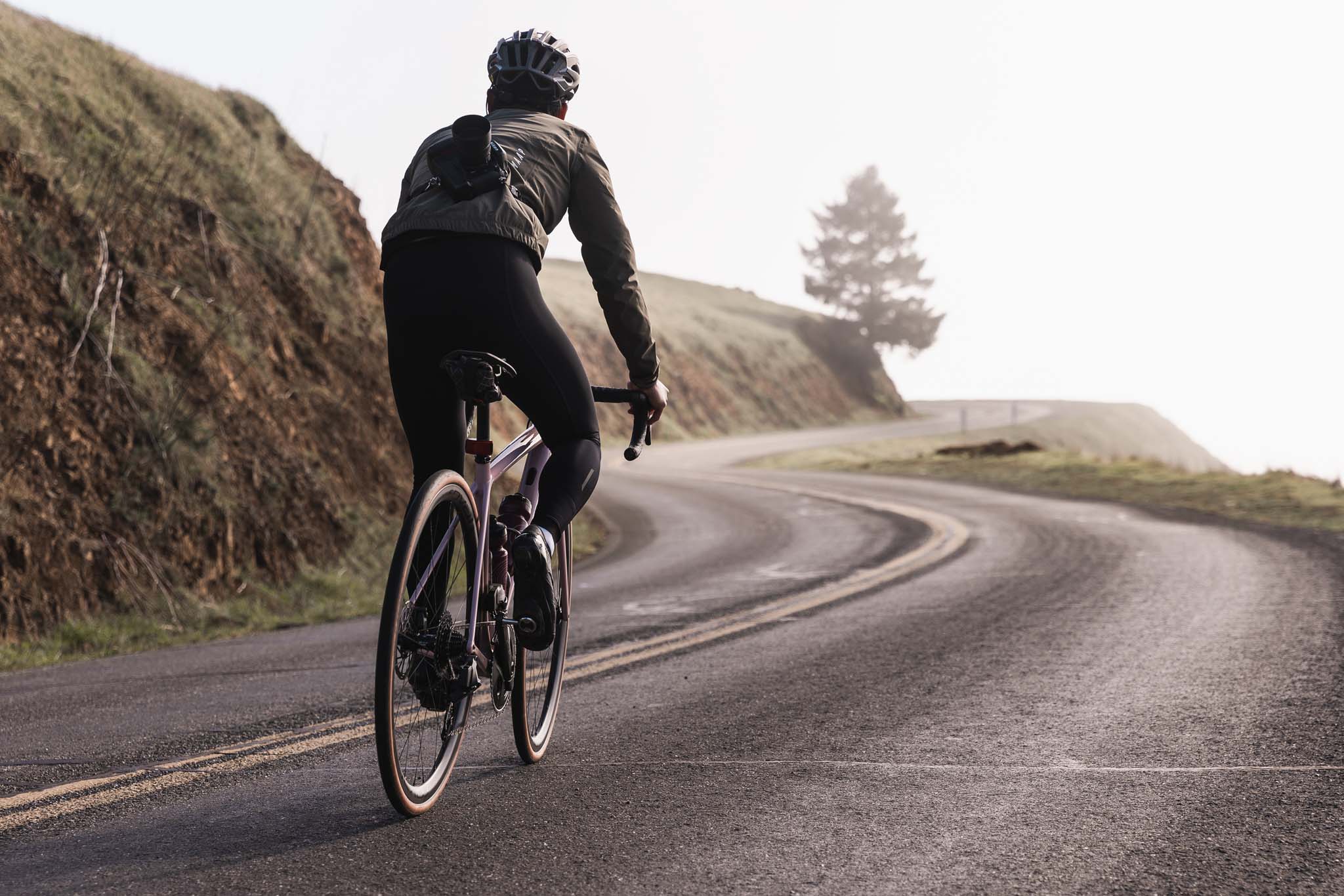
Performance Racing Road Bikes
Let's say you want to go as fast as possible on pavement, a performance road bike may be best for you. One of the key traits of performance road bikes is the ability to efficiently transfer rider effort to the bike. Every time you pedal, the frame wants to flex. This flexing takes away rider effort rather than propelling the bike forward. To go faster, performance bikes are more rigid than endurance road bikes. They also allow the rider's body to get into an aerodynamic and efficient position. There is a big drop from the height of the hips to the height of the hand position that reduces wind resistance while forcing riders to engage core muscles for stability and power. Properly done, this position will distribute weight very evenly between six contact points (feet, hands, and sit bones), which means an effective and comfortable position.
With all this efficient speed, the ride demands precise control. The rigid nature of performance bikes helps a lot with this as it expresses every crack and subtle variation of the road.
Furthermore, the bike won't bend under rider weight when leaning into a turn. This rigidity allows for better control and reduces power loss during turns. They also tend to have what is called “steep” head tube angles that tuck the front wheel in underneath the upper body, which allows for very responsive steering. A shorter distance between the wheels also complements this need. All of this adds up to a swift, responsive ride - the most speed.

Gravel Road Bikes
Want to explore gravel and dirt roads for an adventure off the beaten path? It sounds like you need a gravel bike!
Take the upright positioning of an endurance road bike, which alleviates strain on back, neck, arms, and hamstrings, and drops the rider a few millimeters down. Doing this positions the rider closer to the ground, lowers their center of gravity, and makes them more stable on uneven terrain. Then, give this bike clearance for wider tires that provide greater traction over just about any terrain and control through any conditions—dirt, mud, rain, snow, anything. Add disc brakes to it all and you've got a gravel bike! This type of bike often incorporates vibration-limiting technology along with wider, softer tires, which means not only is it a bike that can go on almost any path, but it can do it without destroying the rider.
Specialized also uses the Future Shock on specific models of their adventure and gravel bikes. The Future Shock is a lightweight suspension system located above the head tube that absorbs vibrations and bumps. This lets you have a more comfortable and efficient ride, allowing you to have even longer backroad adventures. You can read more about the Future Shock here.
Bikes engineered specifically for gravel riding are fairly new to the scene. Historically, riders would use a touring bike. These bikes provided an upright riding position, but they typically had frames made of heavier steel as compared with lightweight steel alloy, aluminum or carbon builds of modern gravel bikes. Like touring bikes, many gravel bikes come with fittings for racks and fenders to carry gear for multi-day trips.
Where these bikes really perform well is off-road. If you come across unpaved roads on one of these, you don't need to go home to get your mountain bike first. That's why adventure and gravel bikes are fantastically popular with experienced riders, as they can explore brand new routes previously not rideable on other drop bar road bikes. They're also popular among beginners because they allow them to go just about anywhere, and adventure is what pulls riders to the saddle day in and day out.
Finally, don't just think of gravel road bikes as “dirt” bikes. Gravel road bikes excel on the rough and tumble streets that everyday bike commuters or urban drop bar riders will encounter. Potholes, cracks, pavers, and chip-sealed roads are no match for the wider tires found on gravel road bikes, not to mention their stable handling characteristics keep riders confidently in control. Add to all of that rack and fender mounts on some of these models and you have the perfect city or commuter option.
You can learn more about these bikes on our Gravel Bike Buying Guide.
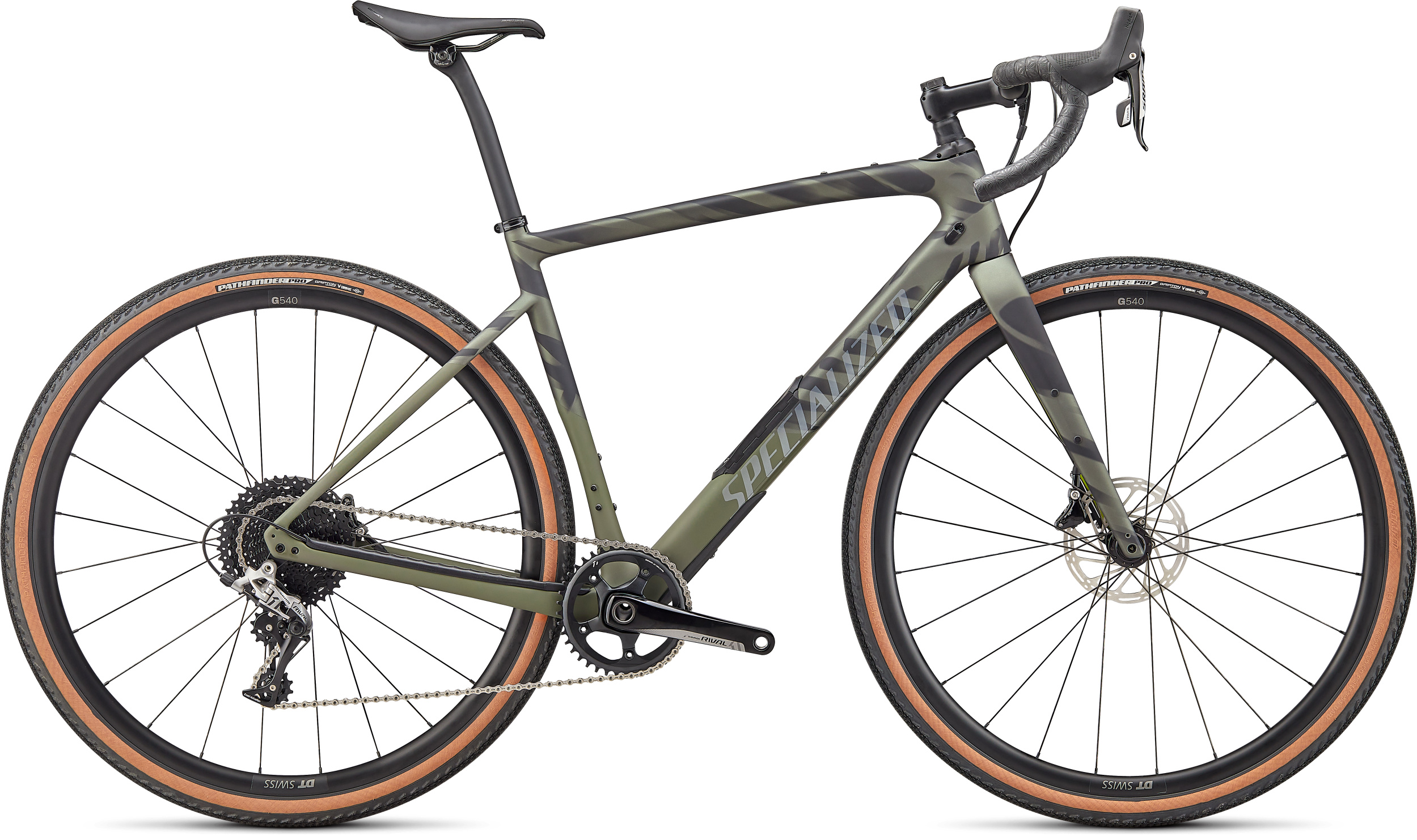
Single Speed Road Bikes
Single Speed Road Bikes are all about simplicity and purity. Their family tree is wide and can be traced from aggressive track-racing frames on one side to repurposing older frames for urban use. Purpose built single speed road bikes can be found with drop bars or flat bars to fit a rider's desires. By having only one gear the bikes have very little regarding maintenance and are lower in cost. This makes them ideal for urban transport. For the ultra-purist, many of these bikes can be run as a fixed-geared bike, which means that if the rear wheel is turning the cranks are turning. No coasting.
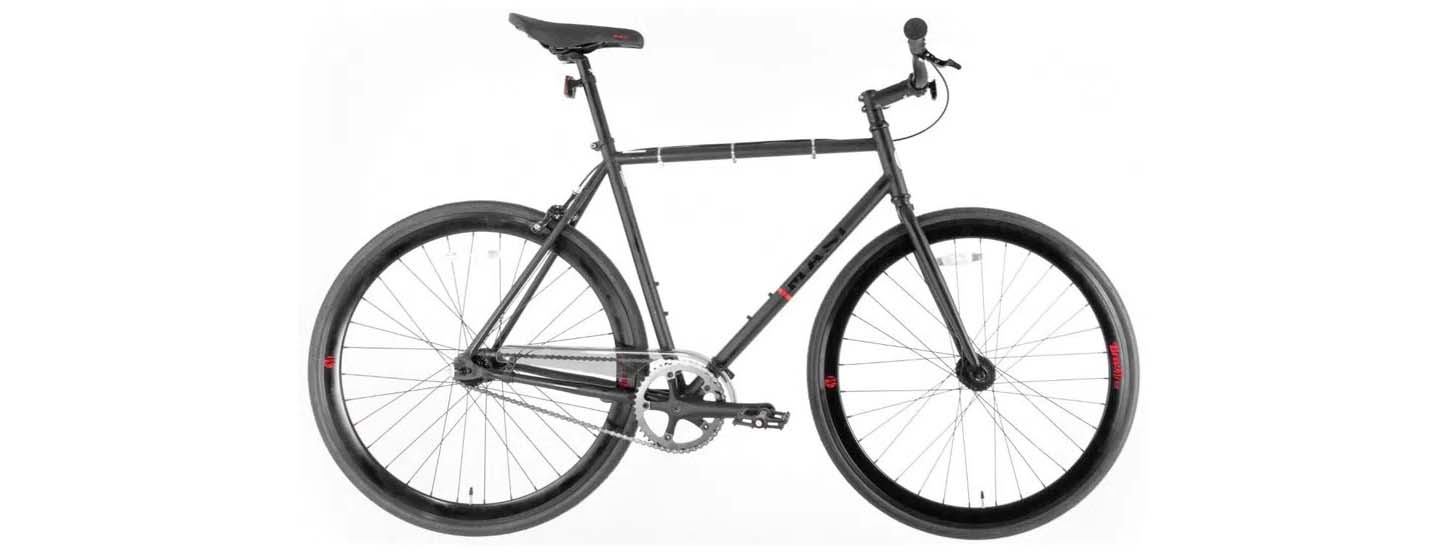
Triathlon Bikes
Triathlon bikes are the rockets of the bike world. They put the rider in a position that targets muscles not used in running or swimming. They are aerodynamically designed because in most triathlons you cannot draft off of other riders, so they need to be able to slip through the air with ease. On the other hand, they don't turn or climb as well as performance bikes, and they typically weigh more.
Who should ride a triathlon bike? First and foremost, these bikes are perfect for someone who wants to go fast and needs to do it alone. To get the most of them requires riding discipline and better-than-average flexibility. And remember, they can be punishing on the body. Riders trade a little comfort for speed.
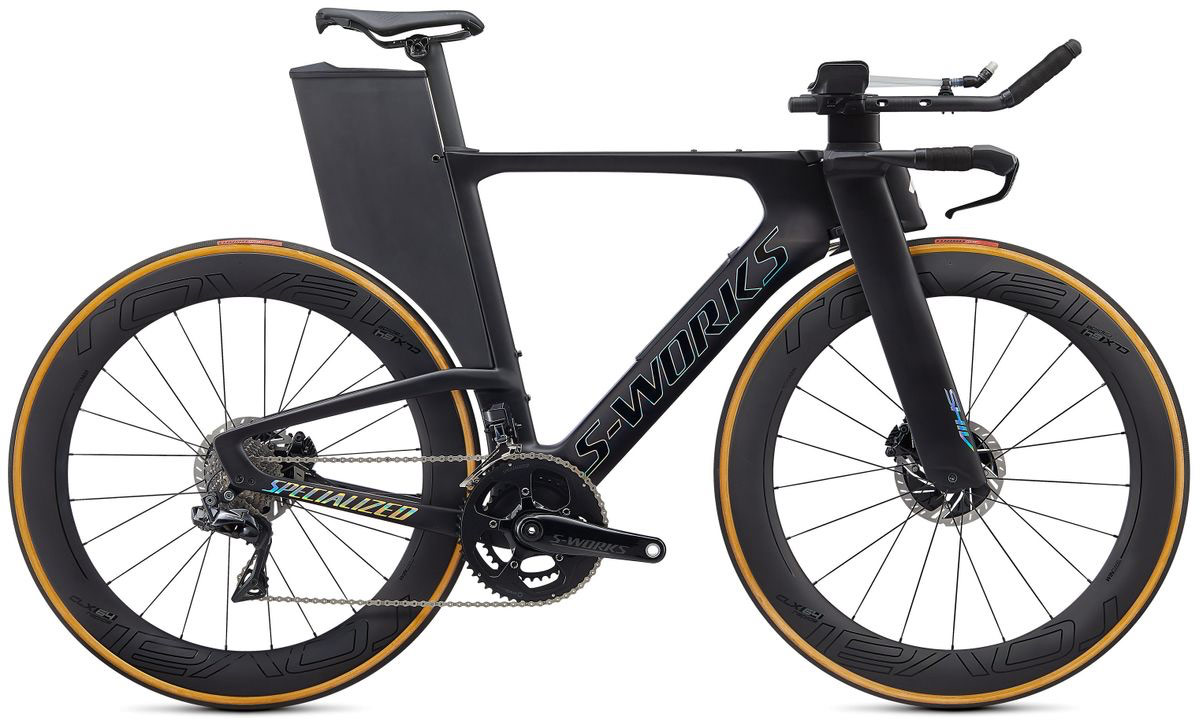
Cyclocross Bikes
The mix of a performance road bike with and adventure and gravel bike is a cyclocross bike. These bikes put the rider in the aggressive body position of a performance road bike while adding the ability to put wider tires on for the similar traction of an adventure and gravel bike. “Cross” bikes are responsive, maneuverable and fast on the dirt, but they are typically rigid. They often have disc brakes and the tire clearance to fit massive knobby rubber on the wheels. However, they typically come with a lower gear range because they're made for slogging through mud all day long, which limits them on the open road.
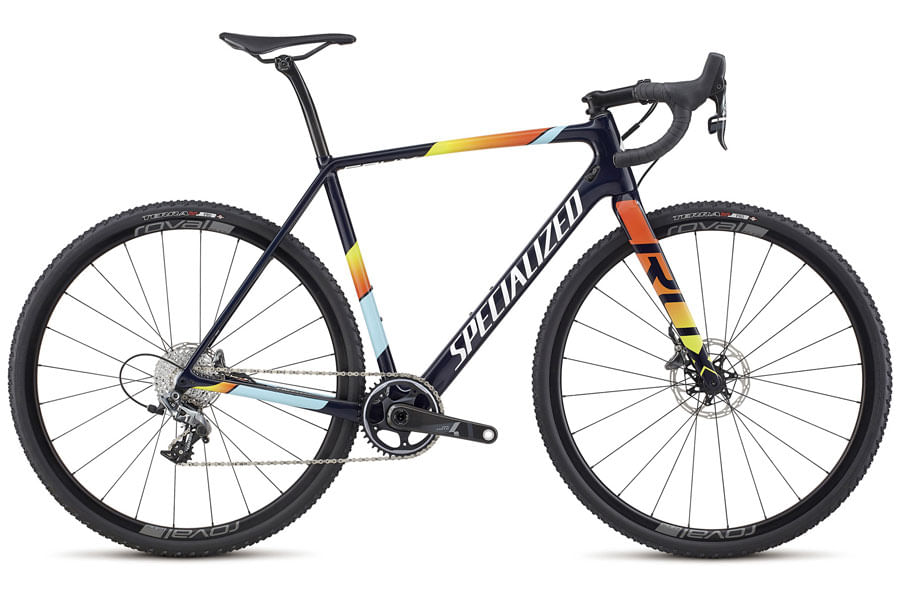
What Frame Materials Are Used In Road Bikes?
The first thing to remember about frame materials, whether it's carbon fiber, aluminum, or steel, is that the material is only as good as the engineering behind it. You can find great riding bikes made from any of these materials and poor riding bikes just the same.
Carbon fiber is a great material for building a bike for two main reasons. One, it has an incredibly high strength and stiffness to weight ratio. Second, unlike steel or aluminum, it can be manipulated in almost endless ways. This means a frame can be made incredibly stiff in certain areas or directions, like areas that impact turning pedal power to moving you forward. It also means a frame can be made to have forgiveness in other areas to reduce road vibrations and impacts from reaching the rider. This forgiveness and vibration damping are why you'll usually find that road bike forks, and often seatposts, are made of carbon fiber, even on bikes with aluminum and steel frames.
Aluminum has a better strength-to-weight ratio than steel. This allows manufacturers to manipulate tube shapes more than is possible with steel, resulting in remarkably lightweight and strong bicycles that still have great ride qualities both in terms of efficiency and comfort.
Steel has a high strength and durability rating, and its properties generally yield a very comfortable riding bike. Of three materials listed here, it's also the heaviest, which is why you don't find many road bikes made from steel today.
Do Components And Wheels Make A Big Difference?
Road bikes used to be known as 10-speeds, referencing the five gears in back and two chainrings up front. Today you'll likely find 12, 11, 10, or 9 gears in back and one to three chainrings. Though there might seem like a dizzying number of setups available, bikes will come with gearing setup to match the style of riding the bike is designed for.
As you move up in levels of components and wheels, you'll see a common theme – lower weight and higher performance. In terms of shifting, this will mean faster, crisper shifts. At the top end, you'll even move from mechanical to electronic shifting, which offers the pinnacle of performance. For wheels, they'll get lower in weight, more aerodynamic, or both.
One of the most significant innovations in road bikes in the past few years has been the incorporation of disc brakes. While the rollout of disc brakes on road bikes has happened slower than on mountain bikes, it is getting much more common because of the real advantages of braking performance. You can read more about road bikes and disc brakes here.
Is Sizing And Fit Important With Road Bikes?
No matter how great a bike is, if it doesn't fit you well you'll never get the most out of it, or you. At ERIK'S we offer both bike fitting and sizing services. We use our sizing process with every road bike to ensure you're on the correct size bike and that it's adjusted comfortably so you can just focus on the ride. Our fit services start where the sizing ends, optimizing the bike for each rider's needs. You can read more about these valuable services here.
Road Bike Must Have Accessories
Now that you're equipped with the knowledge to select the perfect bike for you, the last step to ensuring you'll be set to rack up the miles are some must have accessories. These are the essential accessories we recommend all road bike riders!
Water Bottles and Cages
Hydration is key during all workouts, so having water close by and easy to grab while riding is essential for road biking.
Helmet
A helmet is a biking must have for all riders. However, riding on roads with cars makes a helmet extra important for road cyclists.
Pump
Most road bikes have tubes with a presta valve (which is not like a standard car tire valve) and require a high air pressure. Having a pump that works with presta valves and can reach the proper PSI for a road bike is essential.
Cycling Shorts
Riding a road bike (or any bike) is going to be much more comfortable while wearing cycling shorts. Cycling shorts feature a chamois or padding, that increase comfort, and come in a variety of styles, from tight spandex to practical baggies.
Sunglasses
Sunglasses not only protect your eyes from harmful sun rays, but they also protect your eyes from bugs and debris. An absolute must have.
Lights
Lights help you see and be seen, even during the daytime. If you're a road cyclist - you'll definitely want other road users (like drivers) to be able to see you. If you're riding at night, you'll want to be able to see what's in front of you!
Spare Tube
Getting a flat is near inevitable, being prepared to swap out a tube is key to a great ride! In addition to a tube, you'll need the tools you need to do the repair like Tire Levers and Frame Pump
A Bag
You'll want a way to carry all of the items you need on your ride. A small bag or saddle bag is the perfect size to hold your spare tube and tools with a little left over space.
A Friend
Riding bikes with friends often makes riding more enjoyable. Check out our Riders Club to find some cycling friends!
A Strava Account
Even if you prefer to ride solo, you can join the Erik's Riders Club Strava to share your rides, and check out others rides.
Learn More
When you're ready to buy, check out our blog How to Choose a Road Bike with 4 key questions to answer before purchasing your new road bike.
View our general Bike Buying Guide to review the other kinds of bikes we sell. Or, see our complete list of Buying Guides. Learn what you need to know when purchasing a helmet, bike shoes, a car rack, and more!
About Erik's
Erik was only 13 when he started Erik's in 1977. His first bike, a hand-me-down from an older family member, sparked his interest in bikes. With entrepreneurial spirit, and the money he saved from his job as a paperboy, Erik began his business. Erik's Bike Board Ski has grown into the Midwest’s leading bike, snowboard & downhill ski retailer. We are passionate about our sports & experts on all the gear we carry! Learn more about ERIK’S History.
